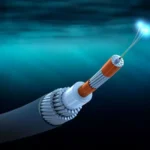HMS Diamond embarked on this journey through the Suez Canal on 14th December, specifically responding to the escalating assault on merchant vessels in the Red Sea. Shortly after making its arrival in the theatre, the Ministry of Defence reported today that the vessel managed to eliminate the drone with its powerful Sea Viper/PAAMS system.
The drone is believed to have been launched from Yemen by Houthi rebels, who have been instrumental in attacks on no fewer than 10 merchant vessels since the 19th of November. This represents the first operational use of the Aster missile [alternatively known as Sea Viper by the Royal Navy] in a combat situation. Interestingly, earlier this week, a similar target was attacked by the French frigate FS Languedoc using an Aster 15 missile. This marks the first time since the 1991 Gulf War that the Royal Navy has taken down an aerial target in a combat situation.

Following these recurring illegal attacks symbolizing a direct challenge to international commerce and maritime safety in the Red Sea region, Defence Secretary Grant Shapps made it clear that the UK is steadfast in its resolution to ward off these attacks to safeguard the free movement of global trade.
In response to escalating violent incidents, the world’s major shipping lines, Maersk and Hapag-Lloyd, have decided to suspend all travel through the Red Sea. This decision is based on the growing recognition of the risks involved. This strategic waterway, traversed by a sixth of the world’s commercial shipping, is crucial to global trade. Any disruption to the smooth functioning of traffic through the Bab-al-Mandeb and Red Sea could have repercussions well beyond the confines of the existing conflict in Israel and Gaza.
Aster missile mix

The Type 45 destroyers, renowned for their sophisticated weaponry, are currently outfitted with a 48-cell launcher designed for Aster missiles. They typically have a combination of Aster 15 and the far-reaching Aster 30 on board. However, the Aster 15’s tenure in the Royal Navy service is drawing to a close, as these ships await the anticipated incorporation of the Sea Ceptor system, expected later this decade.
While the primary objective remains the defense of the target, there is a palpable paradox in the costs involved. The deployment of the pricey Aster missile, which tends to fall within the range of £1-2 million, to annihilate an inexpensive Iranian drone, estimated at roughly £20K, raises eyebrows.
In the recent skirmishes, the Houthis have widely employed not just drones, but also ballistic and cruise missiles. However, the Ministry of Defense classified the target that was successfully obliterated in this particular incident as a ‘drone’.
About HMS Diamond
The HMS Diamond, the third vessel in the Type 45, also known as the Daring class, serves as an air-defence destroyers for the Royal Navy. The ship was launched in 2007, and after completing her contractor’s sea trials in July 2010, she arrived at her assigned home port on September 22, 2010. Following tradition, HMS Diamond was commissioned on May 6, 2011, and formally entered into service on July 12, 2011.
The HMS Diamond, a representative of the Type 45 destroyers of the Royal Navy, boasts great range capabilities. This allows the ship to journey extensive distances without the need for refilling. The range, however, isn’t fixed as it hinges on several variables including the ship’s speed, fuel capacity, and operational demands.

Generally speaking, Type 45 destroyers like the HMS Diamond can cover around 7,000 nautical miles cruising at a speed of 18 knots. This significant range facilitates global operations. It also enables these destroyers to embark on extended deployments.
HMS Diamond propulsion
The HMS Diamond boasts a unique propulsion system derived from a mix of gas turbine engines and diesel generators. In more detail, this vessel is equipped with four WR-21 gas turbines essential for ensuring high-speed mobility. For power generation and slower, fuel-efficient cruising, it makes use of two Wärtsilä diesel generators. Such a hybrid propulsion setup not only enhances operational efficiency but also provides a valuable equilibrium between speed and fuel usage.
HMS Diamond armament
The HMS Diamond boasts an impressive array of modern armaments. At the forefront of its offensive capabilities is the Sea Viper air defense system. This dynamic system harnesses the power of both the Aster 15 and Aster 30 surface-to-air missiles. These particularly effective missiles can simultaneously engage multiple targets, delivering sturdy defenses against any airborne adversaries.
Furthermore, the HMS Diamond is equipped with a 4.5-inch Mark 8 naval gun, perfect for surface encounters. It also possesses anti-ship missile launch capabilities, adding another weapon to its formidable arsenal. Diversifying its defense strategies, this ship also carries various anti-submarine warfare systems. These include torpedoes and a Lynx helicopter armed with a dipping sonar. This impressive combination of weapons empowers the HMS Diamond to handle a multitude of potential threats.
Source : BulgarianMilitary
















